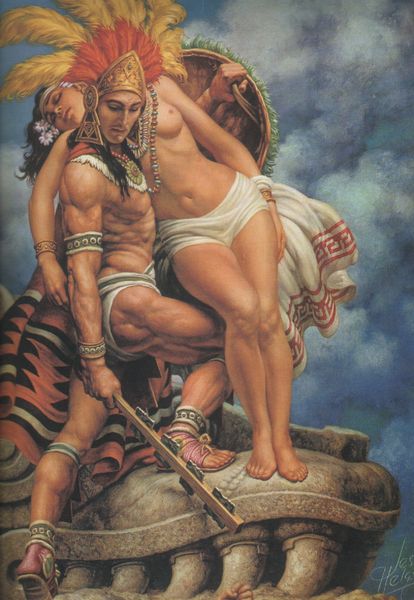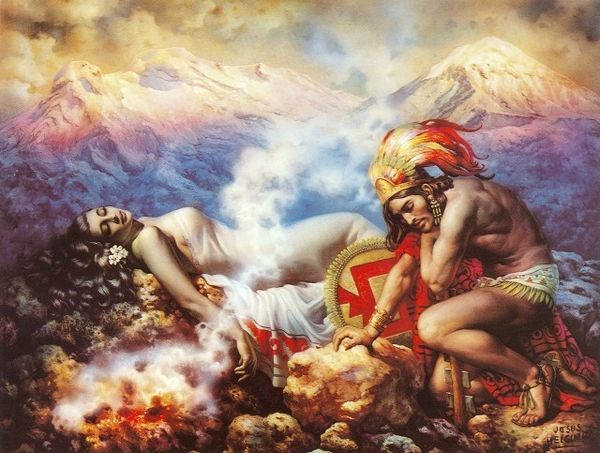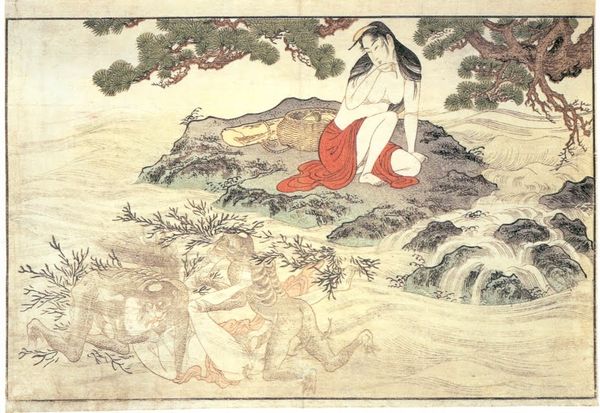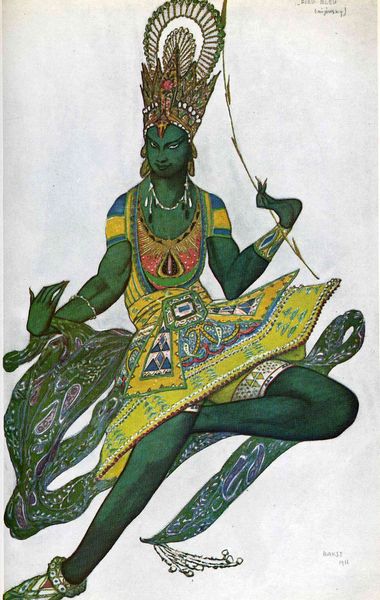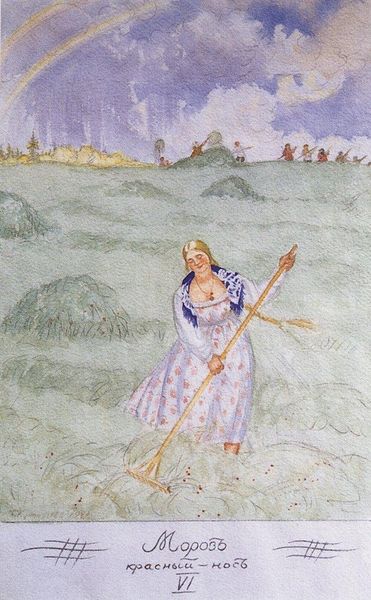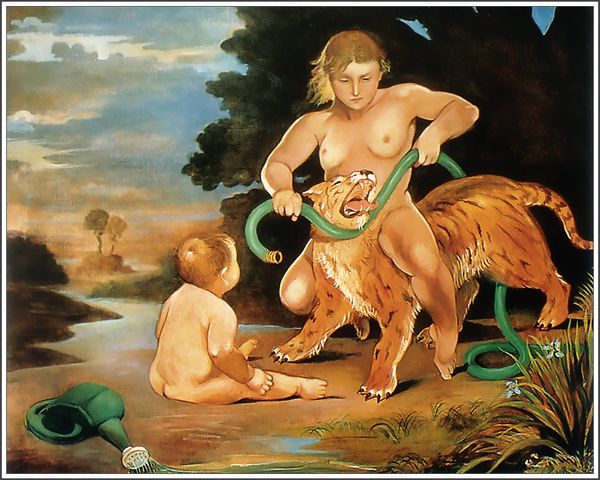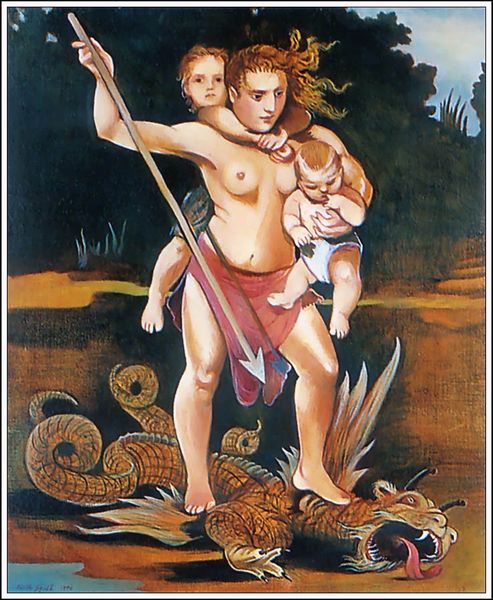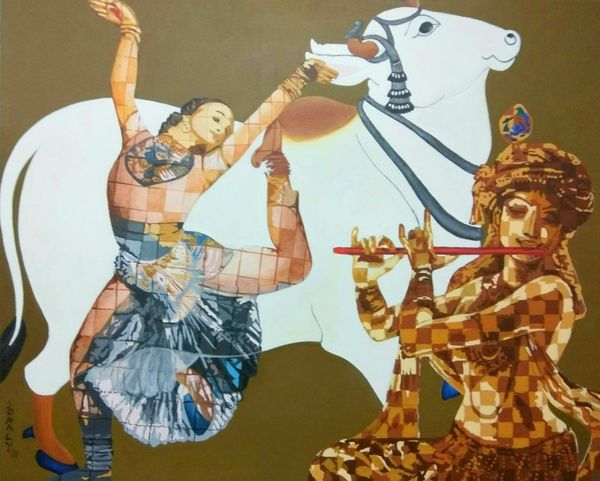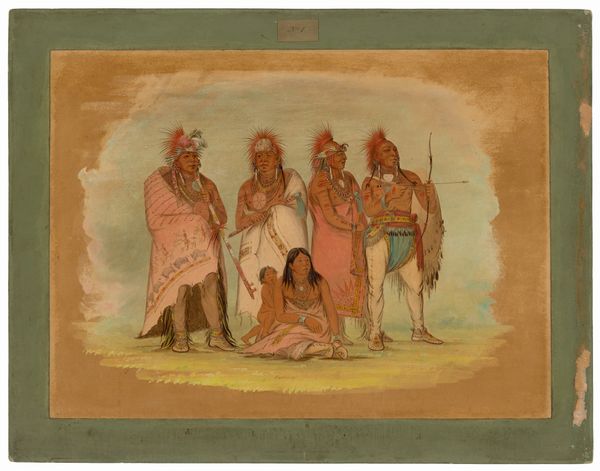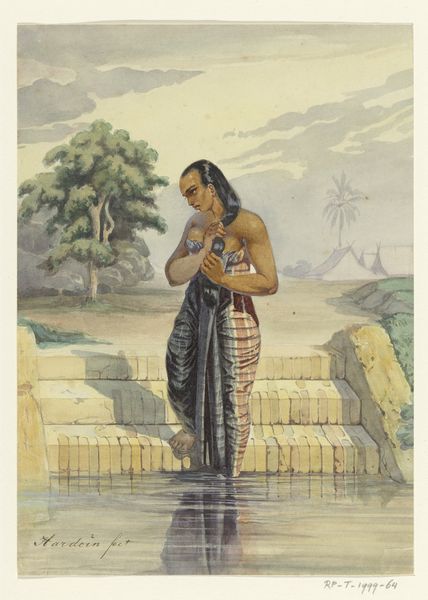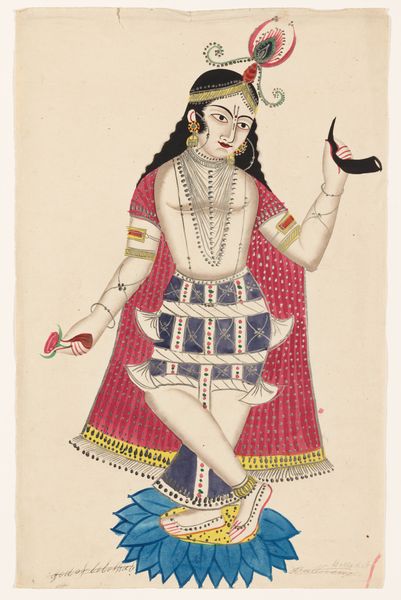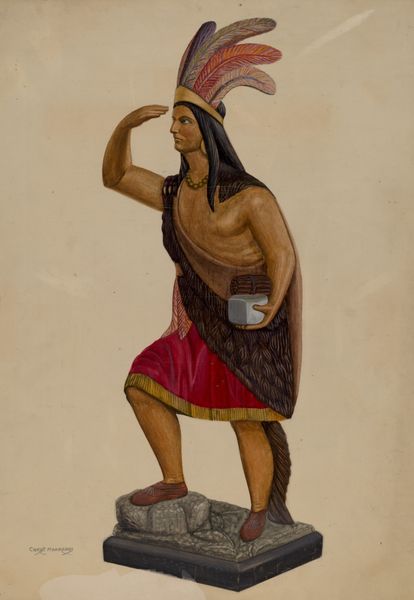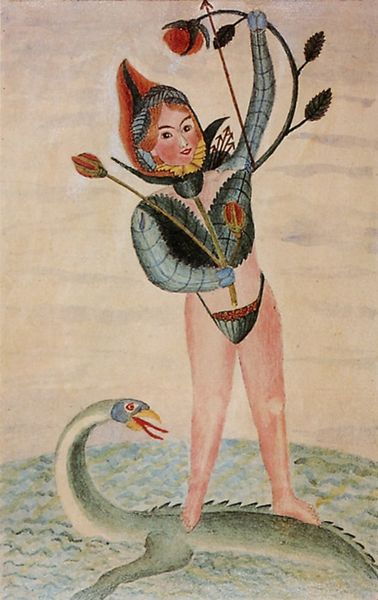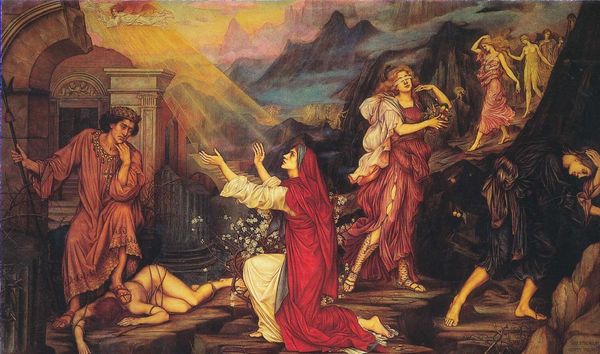
painting, oil-paint
#
gouache
#
narrative-art
#
painting
#
oil-paint
#
figuration
#
oil painting
#
underpainting
#
romanticism
#
mythology
#
watercolour illustration
Copyright: Public domain
Curator: This is a striking painting of Sri Rama, an incarnation of Vishnu, confronting the ocean, attributed to Raja Ravi Varma. Editor: The first thing that strikes me is the almost theatrical quality. It is dramatic. The use of dark, stormy colors emphasizes the turbulence of the scene and impending divine action. Curator: Indeed, Varma often employed such dramatic settings to heighten the emotional impact of his mythological narratives. Looking closely, we see Rama positioned powerfully on the shore, bow drawn, ready to unleash his divine wrath upon the sea. It's a very masculine rendering of divine authority. The oil-paint allows for such expressive gestures. Editor: There is definitely an appeal to a colonial, European style here. Note how Rama and other figures possess an almost neo-classical proportion, despite being scenes taken from the Ramayana, a foundational Hindu text. How do you feel Varma situates Rama in relation to Western heroic ideals? Curator: That is an insightful reading. Varma strategically synthesizes Western academic painting techniques with indigenous Indian aesthetics and subject matter. Rama embodies that cultural negotiation; he is depicted as both divine and human, drawing upon romanticized European artistic traditions while also reflecting an emergent sense of Indian nationalism during the colonial era. Editor: But the romantic undertones give us a particular view. It reminds the viewer of the sheer power wielded by mythological figures in these narratives. Do you think this glorifies Rama? Curator: Perhaps, but it also attempts to democratize religious iconography, making these gods accessible through widely disseminated prints. There is something distinctly feminine at stake too, since these stories frequently explore gender roles as related to virtue, desire, and dharma. Editor: I see what you mean; thank you for enriching my reading of the composition, use of color, and subject position. Curator: Thank you! It is useful to see how formalism informs your attention to larger contextual questions.
Comments
No comments
Be the first to comment and join the conversation on the ultimate creative platform.
